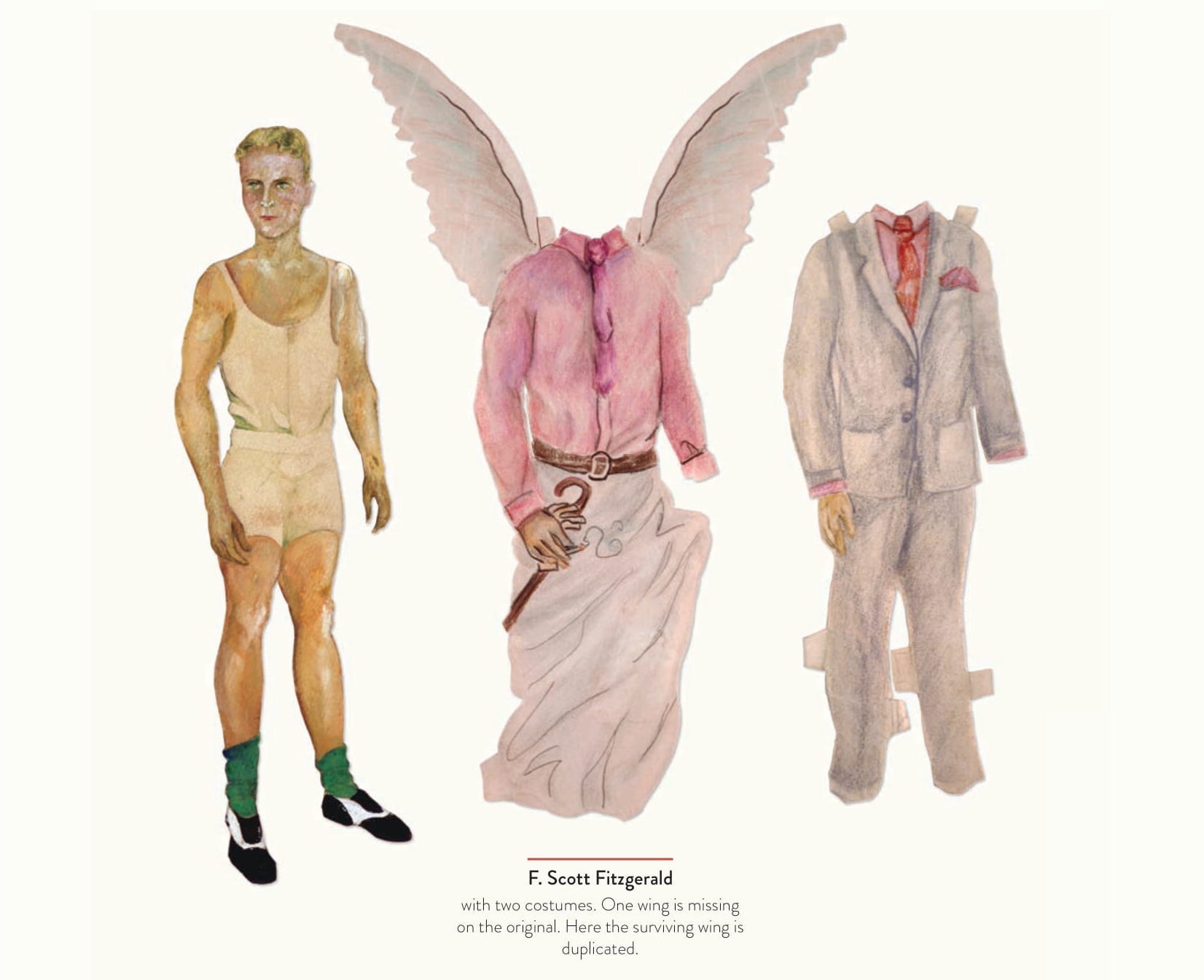For decades, Zelda Sayre Fitzgerald was known primarily as F. Scott Fitzgerald’s wife and highly quotable sidekick, the original Roaring Twenties flapper and model for many of her husband’s fictional heroines. With the women’s movement in the late 1960s came a resurgence of interest in Zelda’s own talents as a writer of fiction and as a dancer.
But until recently, few people were aware of her artwork, although she produced more than one hundred cityscapes of the places where she lived, illustrations for fairy tales and biblical stories, and paintings of figures and flowers. For me, though—her granddaughter—the showstoppers were always her paper dolls.

There were no photographs of my grandparents around the house when I was growing up, but Scott and Zelda were an unspoken presence. Zelda’s cityscape paintings hung downstairs, and her fairy-tale illustrations in our bedrooms. She died only two months after I was born. In her last letter to my mother, she wrote: “I long to meet the baby girl: is she fair or dark, of epic or lyric disposition?” How I wish I had met her! I do, however, find consolation in knowing she was aware of my existence.
The first personal connection I made with my grandmother was when I discovered she had painted these vibrant paper dolls. At around the age of ten, I found them in an attic closet, stored in tattered cardboard portfolios. These secret treasures were like Christmas cookies—they lay, one on top of the other, slightly tangled, and tantalizing. I was too old to play with them, but I enjoyed visiting them occasionally.

My grandfather Scott had died in 1940, nearly forgotten by his public at that time. During the Great Depression his books had essentially fallen out of print. A Fitzgerald revival began in the 1940s, when special armed services editions of The Great Gatsby were distributed to U.S. troops in World War II. By the 1950s his novels and stories were being included in college curricula. In 1959, Life magazine came to our house to take photographs for a story they planned to run, “The Spell of F. Scott Fitzgerald Grows Stronger.” We four grandchildren spent an afternoon with our mother in the attic, exploring Zelda’s ostrich-feather fans, Scott’s lead soldiers, boxes of letters, some first editions, and Zelda’s paper dolls. When the story appeared, I realized I was related to a famous person, but, despite the resurging publicity for F. Scott, the dolls remained in storage.
Perhaps this dormancy period was positive. After many years, Zelda’s contribution to the arts, in her own right, has been recognized. And here, in these playthings, my grandmother is compellingly alive. This collection harkens to a pre-digital age when a brushstroke was personal, a signature. The figures and their finery manifest her excitement about dance, color, story, costume, and play.

All the dolls are sketched in pencil on illustration board and painted in gouache, the brilliant opaque watercolor Zelda used so courageously. Their costumes are painted on a lighter, medium-weight art paper. Most have been cut out from their backgrounds, but some, like King Arthur’s court, Hansel & Gretel, and several assorted dolls, remain intact. The dolls are generally about twelve inches tall. If their costumes include bonnets, scarves, crowns, or helmets, they may reach fourteen inches. The shortest is Baby Bear (page 29), who stands at nine.
Almost every doll has at least one change of costume. The skinny Cardinal Richelieu (page 39), in bright red underwear with a blazing red cassock, is my particular favorite. The ones Zelda created later have more extensive wardrobes. Men are usually outfitted with battle attire as well as ceremonial dress and embody the splendors of eras past. The women are unapologetically muscular, and sometimes the men are boldly androgynous—if Papa Bear desires a party dress, he shall have it! With heads uplifted, captured in their balletic poses, they are emissaries from the land of make-believe, waiting for the curtain to rise.

This book is the culmination of decades of small discoveries about the dolls, their costumes, and their groupings. A few of them are missing, which haunts me. They are fragile; limbs have fallen off, a shoe is lost, a wing has vanished. The dolls, themselves, are being scattered as we grandchildren pass them along to the next generation. But here, for the first time, almost every known member of the troupe is assembled and dressed to dazzle. I hope you find them as fascinating and beautiful as I do, and as imbued with Zelda Fitzgerald’s impetuous spirit.
__________________________________

Excerpted from The Paper Dolls of Zelda Fitzgerald by Eleanor Lanahan. Copyright © 2022. Available from Scribner, an imprint of Simon & Schuster.



